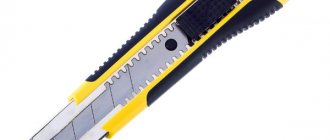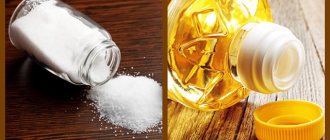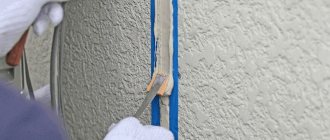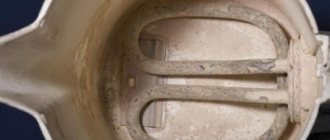Due to the specific nature of the material, even experienced craftsmen run the risk that the sealant will get on the windows themselves and stain them.
In this case, you will need to clean the polyurethane foam using special products or home recipes.
We’ll tell you in this article how to clean fresh and old foam from plastic windows.
What to do with fresh?
Polyurethane foam is a polyurethane that provides high-quality noise and heat insulation . During the application process (blown into cavities), the sealant expands, filling all recesses and holes.
Fresh, just applied, the composition is soft and pliable, having the ability to expand and reliably fill all cavities. In air it hardens quite quickly, within a few hours.
The following home methods are suitable:
- acetone;
- vinegar;
- White Spirit;
- vegetable oil.
You can also use special products designed to clean a construction gun.
The selected solvent allows you to remove the mass that has not yet set without effort. To do this, soak a rag in the selected composition and wipe off the stained part of the plastic window. If the mark is large, then replace the rag with a clean one while wiping off the foam .
Using sharp objects and dry rags for a viscous mass is not effective, as it leads to smearing of the composition. In areas close to the joints of the window and the opening, it is better to remove the foam not immediately, but after hardening. This will avoid breaking the seal.
You should not use water to scrub off polyurethane sealant, since the polyurethane sealant hardens upon contact with it.
When the foam gets in the wrong place...
In such cases, acetone comes in handy; it dissolves liquid foam right before your eyes. But he will serve as an assistant until the composition dries out. And then only mechanical or chemical means will be required.
- Use a metal brush, scraper or knife. Hard pieces of building material are first carefully cut off and then rubbed down with sandpaper.
- Special cleaners for hardened foam: “Platina Cleaner”, “Russian Professional”, “Purex”, “PENO-OFF”, “HOBBY”.
Methods of using such products.
The can is shaken and sprayed onto the contaminated areas; after ten minutes, the remaining foam is removed mechanically, and the surface is wiped with a cotton rag.
Attention:
you need to monitor the area where the cleaning solution hits, otherwise you can remove paint, varnish, and other protective materials along with the foam. Spraying the can near a fire is strictly prohibited!
You can completely abandon chemicals and try to wash dried foam with folk remedies.
How to remove the old one using improvised means?
Dried foam on a plastic window needs to be removed in several stages. The bulk of it must be removed mechanically - cut off using a sharp object, for example, a stationery knife, spatula or scraper. You must act carefully so as not to accidentally damage the surface of the window itself.
After using home recipes, the window should be washed with soapy water and wiped dry.
Vinegar
To clean windows, vinegar is used undiluted. It is applied for 5-10 minutes for effect. Remove with a sponge.
Vegetable oil
Vegetable oil can be used to soften hardened foam . The oil is applied and when the polyurethane softens (after 30-40 minutes), it is cleaned off with a sponge.
For a more effective effect, it is better to heat the oil and leave the oiled rag on the treated area.
The greasy trace of oil is then washed off with any detergent intended for washing windows. Without first cutting off a thick layer of foam, the use of oil is ineffective.
Dimexide
The pharmaceutical product Dimexide can be used unconventionally - to eliminate polyurethane foam. The best result is achieved when the contamination is small and forms a thin layer on the surface.
Procedure:
- A solvent is applied to the remaining foam.
- Distribute it over the stained area using a brush.
- Leave it for just a couple of minutes.
- Remove the softened mass with a damp cloth.
Using Dimexide to remove polyurethane foam - on video:
Acetic essence and solvent
In cases where plastic needs to be cleaned quickly and efficiently, a multi-component composition can be used. This recipe will help solve the problem even in difficult cases.
To prepare it you will need:
- acetone - 1 tbsp. l.;
- vinegar essence – 3 tbsp. l.;
- solvent A-649 – 1 tbsp. l.
All ingredients are mixed. The foam is cut off, and the remaining trace is treated with the prepared solution. The exposure time is several minutes.
Floor coverings and fabrics: how to clean them from polyurethane foam
If foam particles remain on the linoleum, it is best to wait until the sealant has completely dried. If the floor has a textured pattern, it is important to minimize all risks. The safest way is to cut off the sealant and then leave a wet rag on the stained area. The foam should soften, after which it can be easily removed without much effort. You may have to wait at least 10 hours.
Heated vegetable oil is suitable for cleaning laminate flooring. If you have ordinary inexpensive laminate flooring, you cannot use a large amount of water. This may cause it to swell. The situation is similar with parquet. Many aggressive compounds can result in damage to the floor covering. A safe option is vegetable oil. Fresh sealant cannot be wiped off fabrics; it is better to wait for it to polymerize. In some cases, you even have to cut out the contaminated part of the fabric.
How to remove with special preparations?
Special cleaners can be used to remove foam from surfaces. Many companies are engaged in their production. Including those that supply the polyurethane foam itself to the product market.
Kudo Foam Remover
Foam Remover is a remover of hardened polyurethane foam. The product is intended for removing polyurethane composition from plastic, metal and other surfaces with a non-porous structure.
Thanks to its convenient packaging, Kudo spreads well over the surface. Cost – from 140 rubles for a volume of 210 ml. Read reviews here and here.
Soudal
The product is intended for removing polyurethane foam from a wide range of types of surfaces. The product comes with a spatula and brush for ease of use.
Soudal is suitable for cleaning frames, window sills and glass. The remover should not be used on brass, copper or zinc metal surfaces. Price – from 600 rubles per 100 ml. Read reviews here.
Polynor Cleaner
The cleaner is designed to remove polyurethane foam and non-hardening Polynor insulation from various surfaces. The product is suitable for treating window frames, window sills and glass . The product is based on acetone.
Polynor is sprayed onto the stained area of the plastic window. Cost - about 200 rubles per bottle. Read reviews here.
Reasons for foam getting on the door surface
The next step after installing the door structure is to seal the doorway and voids. The work is carried out using polyurethane foam (polyurethane sealant), which is supplied in the form of pressure cylinders. The substance has good sealing properties and is easy to apply, which has made it popular.
However, during use, unforeseen situations occur when the composition gets on the surface of the door, which can compromise the integrity of the decorative coating. This happens for several reasons:
- due to little experience, it was not possible to accurately determine the required amount of the injected mixture. When expanding, the volume of foam turned out to be larger than the cavity being sealed and the excess began to protrude from the gap, leaving marks on the door;
- using cheap non-professional series cylinders with a plastic tube. This mechanism does not allow you to control the rate of foam release and when the valve is released, the composition continues to be released. If you move your hand carelessly, the clump comes off the tube and settles on the door leaf in the form of splashes. Also, when the foam runs out, it is supplied in jerks along with the remaining gas. At this moment, the spray flies out at high speed and scatters, settling on nearby surfaces.
Features of removing traces from various areas of the window structure
The approach to removing polyurethane foam from windows must take into account which surface the contamination is on. Depending on the type of material, the cleaning approach is adjusted.
Glass
It is better to remove the sealant from the glass after it has hardened . The main mass is carefully cut off, avoiding scratching the glass.
Stains are treated with any of the above remedies. Acetone-containing solvents, white spirit and special preparations for cleaning the mounting gun are also suitable.
Windowsill
The sill of plastic windows can be made of ceramics, plastic or wood. For PVC surfaces, treatment with Dimexide and special polyurethane foam solvents is suitable. Stone-like ceramic window sills can be cleaned with any of the household and professional products.
But if the surface is wooden and varnished, the use of such products is prohibited. In this case, foam removal must be carried out when the polyurethane has just begun to set. Its edge is picked up and carefully removed. To make the procedure easy, it is advisable to wait until the sealant has stopped getting dirty, but has not yet hardened.
If the foam has frozen on a varnished window sill, you will have to use a salt solution:
- Pour a glass of water into a bowl.
- Add 1 tbsp. l. salt.
- Stir.
- The solution is applied to the affected area of the window sill.
- Leave for 5 minutes.
- Erase the mark with a wet sponge.
If all the above methods do not help clean the varnished surface, you will have to sand the window sill and re-varnish it.
Plastic
It is recommended to clean the plastic at the joints after the polyurethane mass has hardened. It is better to scrape it off with a plastic spatula rather than a metal one. Further processing can be carried out with Dimexide or sunflower oil.
Recommendations from experts
In order for work to remove polyurethane foam from a plastic window to proceed without unpleasant surprises, it is advisable to adhere to the following advice from professionals:
The more the surface is moistened, the stronger the adhesion of the sealant to the base becomes. To minimize the likelihood of staining windows, they must be dry.- The use of foam should be carried out strictly according to the instructions for the drug.
- Preliminary cleaning with removal of the bulk of the foam will help speed up the process of completely cleaning the windows.
- Acetone and solvents can remove shine from some types of plastic during processing, so it is better to test the product on an inconspicuous area before applying.
- When carrying out work, it is necessary to ensure good ventilation, as solvents emit caustic fumes.
- When choosing a polyurethane foam cleaner, it is better to give preference to one manufacturer’s line. So the effect of processing will be higher.
You will find useful tips and recommendations on how to remove polyurethane foam from various surfaces and objects here.
Removing dried foam mechanically
This method is suitable for wooden surfaces and other capricious materials for which aggressive solutions cannot be used. Can also be used for painted and varnished surfaces, if other methods are not suitable - if necessary, the coating can be restored.
Sequencing:
- cut off the dried layer of foam with a sharp knife;
- wipe off any remaining material with fine-grained sandpaper;
- rub the surface until smooth;
- varnish the treated area if necessary.
You can also clean your hands mechanically. To do this, wet the skin well, spread the contaminated areas with a rich cream and remove traces of foam with a pumice stone.











